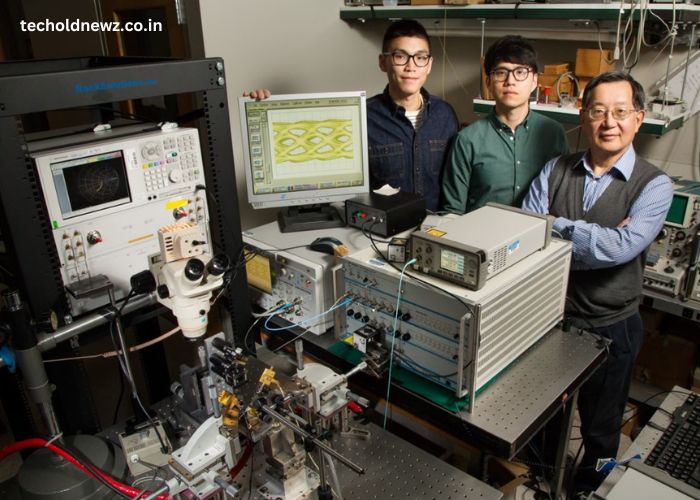The term HSIC in often appears in technical discussions and industries such as technology, data processing, and electronics. But what does it mean, and why is it important? HSIC stands for High-Speed Inter-Chip, a high-performance interface technology used for data communication between chips. Whether in consumer electronics or data servers, HSIC plays a pivotal role in ensuring seamless and efficient communication.
HSIC technology eliminates the need for bulky connectors and reduces power consumption. This makes it a preferred choice for modern devices.
Key Points:
- HSIC stands for High-Speed Inter-Chip, focusing on efficient data transfer.
- It simplifies device design and reduces power consumption.
- Used widely in electronics and data communication systems.
What Is HSIC In Simple Terms?
HSIC, or High-Speed Inter-Chip, is a technology that enables fast and efficient communication between microchips within an electronic device. It is commonly used in devices like smartphones, tablets, and computers, where speed and power efficiency are critical. Unlike traditional USB connections, HSIC uses fewer wires and eliminates bulky connectors.
For instance, imagine a smartphone where the processor and memory need to exchange data continuously. HSIC acts as the bridge, ensuring data moves quickly without causing a strain on battery life. Its simple physical layer and advanced design make it a favorite among device manufacturers.
Note: HSIC is ideal for applications that demand low power usage and high performance.
How Does HSIC Differ From Traditional USB?
HSIC is often compared to traditional USB technology, as both are used for communication. However, there are notable differences:
| Feature | HSIC | Traditional USB |
|---|---|---|
| Connector Type | No bulky connectors | Requires connectors |
| Power Consumption | Low | Moderate to high |
| Data Transfer Speed | High | Variable |
| Applications | Internal chip communication | External device connections |
HSIC simplifies hardware design by eliminating the need for external connectors, while USB remains a versatile option for external communication.
Reminder: While HSIC is excellent for internal use, USB is more flexible for external connections.
What Are The Applications Of HSIC?
HSIC has found its way into various industries due to its versatility and efficiency. Some of the most common applications include:
1. Consumer Electronics
HSIC is widely used in smartphones, tablets, and laptops. It ensures that components like processors, memory, and sensors communicate without lag. For example, in a smartphone, the camera module uses HSIC to send high-quality images to the processor.
2. Automotive Systems
Modern vehicles rely on advanced electronics for safety and entertainment. HSIC connects the different chips in systems like navigation, collision detection, and infotainment to ensure real-time performance.
3. Data Centers
In data centers, speed and reliability are crucial. HSIC is used to connect chips in servers, ensuring smooth data processing and reduced latency.
4. Medical Devices
HSIC technology is also employed in medical equipment, enabling precise communication between sensors and processors. For instance, portable health monitors use HSIC for accurate data recording and analysis.
Why Is HSIC Important For Modern Technology?
The importance of HSIC lies in its ability to balance performance with energy efficiency. Here’s a deeper dive into its benefits:
1. Low Power Consumption
In a world where devices need to last longer on a single charge, HSIC’s low power requirement is a significant advantage. For example, wearable devices like fitness trackers use HSIC to conserve battery.
2. Compact Design
Without the need for large connectors, HSIC enables slimmer and lighter devices. This is why manufacturers prefer HSIC for products like ultrabooks and smartwatches.
3. Improved Speed
HSIC’s high-speed data transfer capabilities make it ideal for applications requiring real-time communication, such as streaming video on smartphones.
Comparison: Benefits of HSIC Over Traditional USB
| Feature | HSIC Advantage | USB Limitation |
| Power Efficiency | Excellent | Moderate |
| Speed | High | Variable |
| Device Size | Supports slim designs | Requires larger connectors |
What Are The Challenges Of Using HSIC?
While HSIC offers many benefits, it is not without challenges:
- Limited Distance: HSIC works well for short distances (within a device), but it is not suitable for long-range communication.
- Specialized Applications: Since HSIC is primarily designed for internal use, it may not be a one-size-fits-all solution.
- Cost Considerations: Implementing HSIC technology can be expensive initially, although it often pays off in the long run due to its efficiency.
Note: HSIC is best suited for applications where short-distance, high-speed communication is required.
Conclusion
HSIC, or High-Speed Inter-Chip, is a game-changer in the world of electronics and data communication. By enabling fast, energy-efficient data transfer between chips, it has become a cornerstone of modern technology. From consumer electronics to automotive systems, its applications are vast and varied. While it does have some limitations, its benefits often outweigh the drawbacks, making it an essential technology for future innovations.
Understanding HSIC and its role in modern devices can help consumers and professionals alike appreciate the technology powering their favorite gadgets.
FAQ’s
- What is HSIC used for? HSIC is used for high-speed communication between chips within electronic devices, such as smartphones and laptops.
- How does HSIC differ from USB? HSIC is optimized for internal communication with low power consumption and no bulky connectors, while USB is designed for external connections.
- What are the benefits of HSIC? HSIC offers advantages like high speed, low power consumption, and compact device design.
- Can HSIC be used for long-distance communication? No, HSIC is designed for short-range communication within a device.
- Where is HSIC technology commonly applied? HSIC is commonly used in consumer electronics, automotive systems, data centers, and medical devices.


